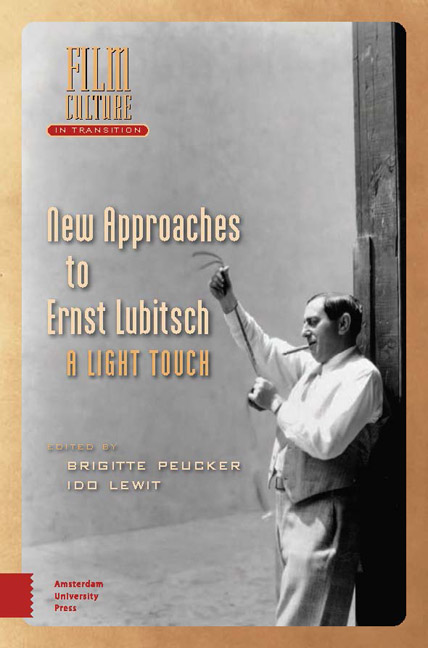8 - Miriam Hopkins Learns to Wink
Published online by Cambridge University Press: 16 April 2024
Summary
Abstract
The art of the wink encapsulates and epitomizes Miriam Hopkins's comedic skill, a virtuosity that proved of singular importance in Lubitsch's transition from the gestural language of silent films to the vociferous ideologies of talking pictures. In three successive, increasingly inventive, morally adventurous films—The Smiling Lieutenant (1931), Trouble in Paradise (1932), and Design for Living (1933)—Hopkins modernized Lubitsch's Old World sophistication in physically and vocally inflected performances that announced a new comic figure: the woman who winks, we might call this screen avatar of openly desirous, exuberantly modern, morally reckless (even cheerfully larcenous!) womanhood.
Keywords: Woman who winks, impersonation, sexual triangle, law of thirds, caricature, cash
“When we like someone, we smile. But when we want to do something about it, we wink.”
‒ The Smiling Lieutenant (1931)So explains the louche, patently expert Lieutenant Niki von Preyn (Maurice Chevalier) to Princess Anna (Miriam Hopkins), who, newly introduced to the exigencies of physical desire, is eager to master the social and sexual codes that are left unreferenced in the carefully curated Royal Encyclopedia that has been her sole guide to the ways of the world. The distance as well as the distinction between a smile and the conspiratorial wink—which signals a determination to act on a (crucially) unvoiced feeling—delineate the artistic as well as social and erotic compass of Ernst Lubitsch's first sound films. That it is Hopkins who ultimately masters the art of the wink attests to her importance in Lubitsch's transition from the gestural language of silent films to the vociferous ideologies, especially in respect to gender, of talking pictures. In three successive, increasingly inventive, morally adventurous films—The Smiling Lieutenant (Lubitsch, 1931), Trouble in Paradise (Lubitsch, 1932), and Design for Living (Lubitsch, 1933)—Hopkins channeled and idiosyncratically modernized Lubitsch's Old World sophistication in physically and vocally inflected performances that announced a new comic figure: the woman who winks, we might call this screen avatar of openly desirous, exuberantly modern, morally reckless (even cheerfully larcenous!) womanhood.
- Type
- Chapter
- Information
- New Approaches to Ernst LubitschA Light Touch, pp. 161 - 176Publisher: Amsterdam University PressPrint publication year: 2024



